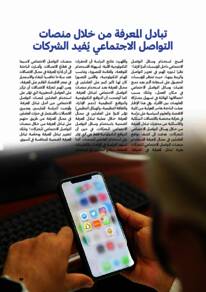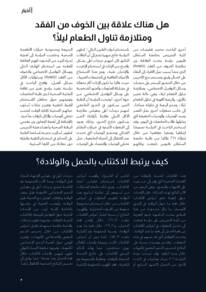وثيقة
شبكات التواصل الاجتماعي ودورها في انتشار مشكلة التنمر الإلكتروني : دراسة ميدانية مطبقة على عينة من طلبة جامعة السلطان قابوس.
المصدر
رسالة ماجستير
عناوين أخرى
Social Media Networks and Their Role in the Spread of Cyberbullying : A Field Study Applied to a Sample of Students at Sultan Qaboos University.
الدولة
عمان.
مكان النشر
مسقط
الناشر
جامعة السلطان قابوس.
ميلادي
2024
اللغة
العربية
نوع الرسالة الجامعية
رسالة ماجستير
الملخص الإنجليزي
This study aimed to identify the role of social media networks in the spread of cyberbullying among students by determining the forms of cyberbullying, the psychological, social, and technical motives for students to engage in cyberbullying, and identifying the consequences of cyberbullying in terms of psychological, social, educational, and health effects. Additionally, the study sought to assess students' awareness of how to deal with cyberbullying cases and the role of academic staff members in mitigating the spread of cyberbullying, to develop mechanisms for addressing and reducing the severity of this issue.
The study relied on a descriptive-analytical approach using the social survey method by sampling. Data were collected by distributing an electronic questionnaire to a random sample of 386 students from various colleges at the university. Additionally, an interview guide was applied to a sample of 8 academic staff members from the Department of Sociology and Social Work at College of Arts and Social Sciences, Sultan Qaboos University.
The study relied on combining quantitative and qualitative analysis, utilizing the Statistical Package for the Social Sciences (SPSS) for quantitative analysis, and content analysis for analyzing the responses of academic staff members to the interview guide. The study reached several key findings: A low prevalence of cyberbullying among university students on social media due to high awareness levels. The existence of various forms and types of cyberbullying. Females experiencing cyberbullying more than males. One of the main reasons for engaging in cyberbullying is weak religious motivation, with social motivations being the most prominent, attributed to poor social upbringing. Technical factors significantly contribute to the spread of cyberbullying. Cyberbullying has negative psychological, social, academic, and health effects on both males and females. Males suffer more from the psychological effects, while females experience higher negative educational and health effects. Male and female are affected similarly by social effects.
The results also indicated sufficient awareness among students on how to deal with cyberbullying cases via social media networks. From the perspective of academic staff members, most agreed that cyberbullying has negative psychological, social, academic, and health impacts on students. Their primary role is to refer cyberbullying cases to the appropriate authorities. Key recommendations of the study include: Students level adhering to Islamic values and participating in various university and community activities to develop skills and self-confidence. The family level is determined by promoting positive values among children such as values of self-respect, respect for others, and respect for other cultures and conducting training sessions on proper social upbringing and. University level: designing programs and activities on social media that meet students' desires and organizing student competitions to foster cooperation. Local community level involving all institutions, such as the police, public prosecution, the Information Safety Center, universities, schools, and civil society organizations, in intensifying efforts to protect society from cyberbullying and finding effective solutions. International level: promoting international cooperation to easily control cyberbullying perpetrators and enhancing values of tolerance and human values among people. Future research level: conducting studies on the potential use of artificial intelligence tools to monitor cyberbullying cases on social media.
الملخص العربي
هدفت هذه الدراسة إلى التعرف على دور شبكات التواصل الاجتماعي في انتشار مشكلة التنمر الإلكتروني بين الطلبة، وذلك بتحديد أشكال التنمر الإلكتروني، ودوافع الطلبة النفسية، والاجتماعية، والعوامل التقنية لممارسة التنمر الإلكتروني. كما سعت إلى التعرف على الآثار المترتبة على ممارسة التنمر الإلكتروني (النفسية، الاجتماعية، التعليمية، الصحية)، ومعرفة مدى وعي الطلبة بطريقة التعامل مع حالات التنمر الإلكتروني ودور أعضاء الهيئة الأكاديمية في جامعة السلطان قابوس للحد من انتشار المشكلة، بهدف الوصول إلى آليات لمواجهة هذه الظاهرة والتخفيف من حدتها.
اعتمدت الدراسة على المنهج الوصفي التحليلي باستخدام طريقة المسح الاجتماعي. تم جمع البيانات باستخدام استبانة إلكترونية طبقت على عينة عشوائية مكونة من 386 طالبًا وطالبة موزعين على مختلف كليات الجامعة، بالإضافة إلى تطبيق دليل مقابلة على عينة مكونة من 8 أعضاء هيئة أكاديمية.
أظهرت النتائج انخفاض نسبة التنمر الإلكتروني بين طلبة الجامعة بسبب ارتفاع مستوى الوعي، كما بينت وجود أشكال مختلفة من التنمر الإلكتروني. أشارت النتائج أيضًا إلى أن الإناث أكثر تعرضًا للتنمر الإلكتروني من الذكور، وأن أبرز أسباب التنمر تعود إلى ضعف الوازع الديني والدوافع الاجتماعية نتيجة للتنشئة الاجتماعية الخاطئة. وقدمت الدراسة توصيات لتعزيز القيم الإيجابية، وتفعيل الأنشطة التوعوية على مستوى الأسرة والجامعة والمجتمع.
اعتمدت الدراسة على المنهج الوصفي التحليلي باستخدام طريقة المسح الاجتماعي. تم جمع البيانات باستخدام استبانة إلكترونية طبقت على عينة عشوائية مكونة من 386 طالبًا وطالبة موزعين على مختلف كليات الجامعة، بالإضافة إلى تطبيق دليل مقابلة على عينة مكونة من 8 أعضاء هيئة أكاديمية.
أظهرت النتائج انخفاض نسبة التنمر الإلكتروني بين طلبة الجامعة بسبب ارتفاع مستوى الوعي، كما بينت وجود أشكال مختلفة من التنمر الإلكتروني. أشارت النتائج أيضًا إلى أن الإناث أكثر تعرضًا للتنمر الإلكتروني من الذكور، وأن أبرز أسباب التنمر تعود إلى ضعف الوازع الديني والدوافع الاجتماعية نتيجة للتنشئة الاجتماعية الخاطئة. وقدمت الدراسة توصيات لتعزيز القيم الإيجابية، وتفعيل الأنشطة التوعوية على مستوى الأسرة والجامعة والمجتمع.
قالب العنصر
الرسائل والأطروحات الجامعية





